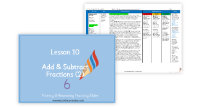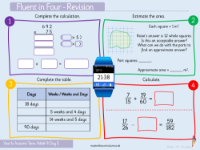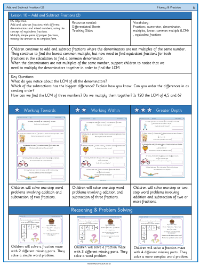Fractions - Add and Subtract Fractions (2) - Presentation

Maths Resource Description
In Lesson 10 of the Fractions series, students delve deeper into the world of adding and subtracting fractions, specifically focusing on those without a common multiple. The lesson emphasises the importance of understanding equivalent fractions in order to perform these operations successfully. An equivalent fraction is simply a different way of expressing the same value, which is essential when combining fractions with different denominators. For example, the lesson illustrates how to subtract 1/2 from 7/9 by first finding the lowest common multiple (LCM) of the denominators, which in this case is 18, and then converting both fractions to have this common denominator before performing the subtraction.
The lesson includes a variety of activities where students apply this method to a range of fractions, reinforcing their grasp of the concept. They are tasked with finding the LCM of denominators and then using this to convert and calculate the sum or difference of the fractions. For instance, when subtracting 1/3 from 3/4, students would find the LCM of 4 and 3, convert the fractions accordingly, and then subtract. This method is also applied in practical contexts, like calculating the total weight of two bags of vegetables with different weights expressed as fractions of a kilogram. The lesson ensures that students not only learn the mathematical technique but also understand its application in real-life scenarios.



